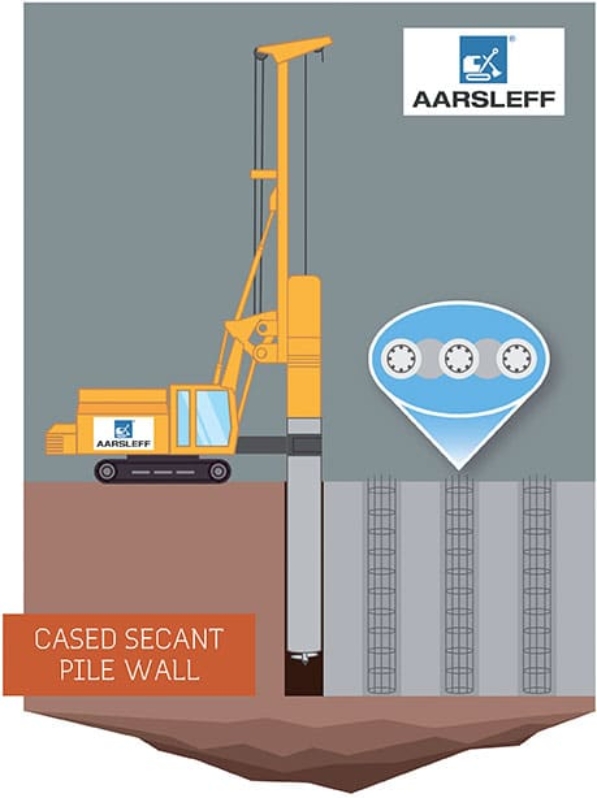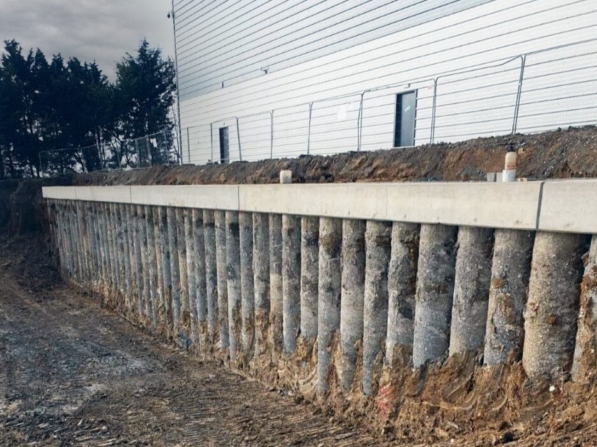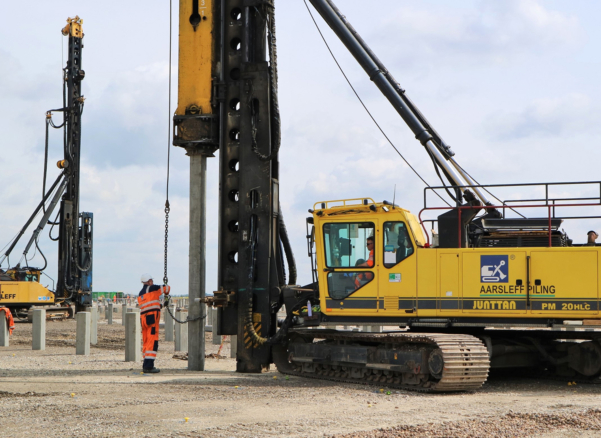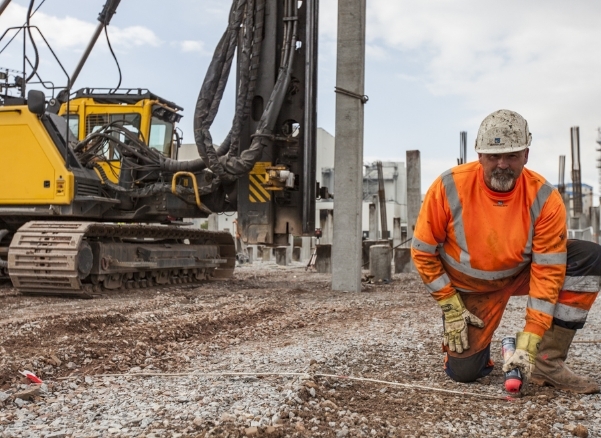What Are Secant Pile Walls?
Table of Contents
- About Secant Pile Walls
- Common Uses
- How Are Secant Pile Walls Constructed?
- What Are Male and Female Piles?
- What Is the Difference Between Cantilever Pile Walls and Secant Pile Walls?
- Advantages of Secant Pile Walls
About Secant Pile Walls
A secant pile wall is formed by constructing intersecting reinforced concrete piles to form a continuous retaining wall and achieve water tightness. The secant piles are typically constructed by drilling and augering using the CFA technique or the cased CFA technology. Rebar cages, steel channel sections, I-beams or H-beams are often incorporated for reinforcement.
The primary piles are drilled into the ground first. Secondary piles are then installed between primary piles once the latter gain sufficient strength. [1] The average diameter of the piles varies from 600 mm to 1200 mm. The overlap between the primary and secondary piles is typically in the order of 8cm.

Common Uses
Secant pile walls are typically installed as retaining structures and lateral support systems for deep foundations, retaining elements and at the same time load-bearing walls and deep foundations for engineering constructions (e.g. walls and foundations of underground structures, tunnels, stand-alone and framed bridgeheads, etc.).
Other applications of secant pile walls include slope stabilisation to prevent landslides or erosion, wing wall support, excavation support including basements, cutoff walls for drainage channels and temporary or permanent retention.
How Are Secant Pile Walls Constructed?
Before drilling, a guide wall is constructed at the top of the watertight secant piled wall. This ensures that the spacing and overlap arrangement of interlocking piles are maintained to achieve verticality and structural integrity. The wall construction involves using CFA or Cased CFA technology and consists of reinforced piles with the gaps between them filled with:
- Columns made of low-strength material of 1-3 MPa (concrete or mortar, usually with bentonite), spaced approx. 620-670mm for a drilling diameter of 470-500mm. This solution ensures resistance to groundwater (temporary support), but does not guarantee permanent water resistance. In order to ensure permanent water resistance, additional liners or sealing agents are required.
- Columns having a compressive strength of 10-20 MPa and prolonged binding time (56-day strength instead of 28-day strength), spaced 700-750mm for a drilling diameter of 470-500mm. This solution ensures long-term water resistance, provided that a minimum overlap of 25mm is provided.
- Full-strength concrete piles with prolonged binding time, spaced approx. 400mm for a drilling diameter of 500mm. This solution also ensures long-term water resistance and is widely used as a support system for deep excavations with a pile wall constructed on a circular plane, since waling beams and/or struts are not required.
This video demonstrates the secant piling method, which involves the installation of a secant pile wall & Vor der Wand:
What Are Male and Female Piles?
The primary piles/columns cast first are called female or soft piles. These unreinforced piles are typically made using materials such as bentonite, cement, or weak concrete. The reinforced load-bearing piles are drilled to intersect the female piles/columns and are called male or hard piles.
What Is the Difference Between Cantilever Pile Walls and Secant Pile Walls?
Cantilever pile walls can be used for protecting land faults up to 5m high or, if using anchors or a strut system, up to 20m high. Secant pile walls allow for protecting land faults up to 5-6m or, if using anchors or struts, up to 25m high. The standard rake of the installed pile wall does not exceed 1:75. However, under special monitoring, the rake can be reduced to 1:125 and, in some cases, even to 1:200 for secant walls made of hard piles and installed using the CCFA technology.

Advantages of Secant Pile Walls
The main advantages of secant pile walls are:
- Creates a continuous barrier with enhanced water-tightness
- Provide increased wall stiffness compared to sheet piles
- Can be installed on difficult ground conditions (cobbles/boulders)
- Vibration-free and low-noise construction
- More flexible in shape and design than piling alternatives, such as diaphragm walls
- Versatile and effective solution for many applications
- Can be retained by anchors or strutting systems (either as temporary or permanent retention) when deflection criteria are tight
- Can bear axial loads








